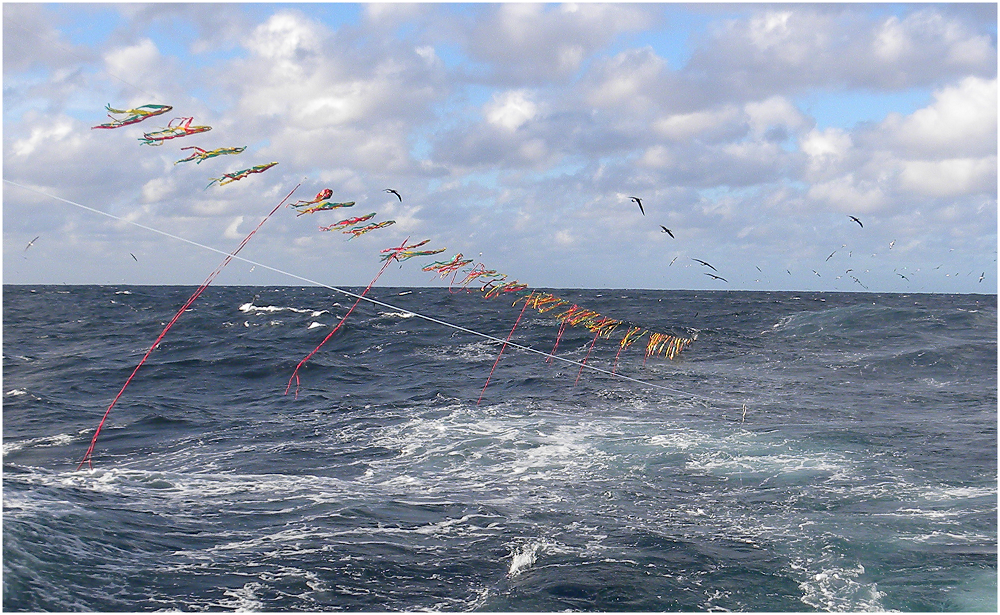
Keith Reid (Ross Analytics Pty Ltd, Tasmania, Australia) and colleagues have published in the journal, Emu – Austral Ornithology on the implementation of seabird bycatch mitigation measures in squid trawl fisheries in New Zealand.
The paper’s abstract follows:
“Although there is an increasing awareness of the high rates of seabird bycatch in trawl fisheries globally, there is relatively limited implementation of effective mitigation measures. Seabirds that are attracted to the stern of the trawl vessel to feed on fish-waste can be drowned or injured when they collide with warps/cables or when they become entangled in nets. Managing fish-waste discharge (processing offal and discards) and limiting access to it by scaring birds have been identified as the most effective measures to reduce seabird mortality from collisions with warps. New Zealand’s arrow squid (Nototodarus spp.) trawl fishery occurs during the austral summer and autumn when there is significant overlap with large numbers of foraging seabirds due to the proximity of breeding areas. Regulations introduced by the New Zealand government in 2007 requiring the use of devices to reduce warp strikes and operational procedures to manage fish-waste were independently implemented by the fishing industry in 2007 with the support of fishery regulators. The rate of capture of albatrosses by warps decreased from a mean of 2.9 birds per 100 tows during the period 2003 to 2006 to a mean of 0.7 birds per 100 tows after 2007. Long-term ownership of squid fishery quota catalysed the proactive engagement of the industry and has been reflected in a positive cultural shift in the attitude of fishers towards managing the risk of the capture of seabirds. Multi-sector collaboration and engagement allowed for the translation of experimental mitigation results into long-term, industrial-scale operational practices.”
Reference:
Keith Reid, G. Barry Baker & Richard Wells (2023) Mitigation of seabird bycatch in New Zealand squid trawl fisheries provides hope for ongoing solutions, Emu - Austral Ornithology, DOI: 10.1080/01584197.2023.2214580
30 June 2023

 English
English  Français
Français  Español
Español